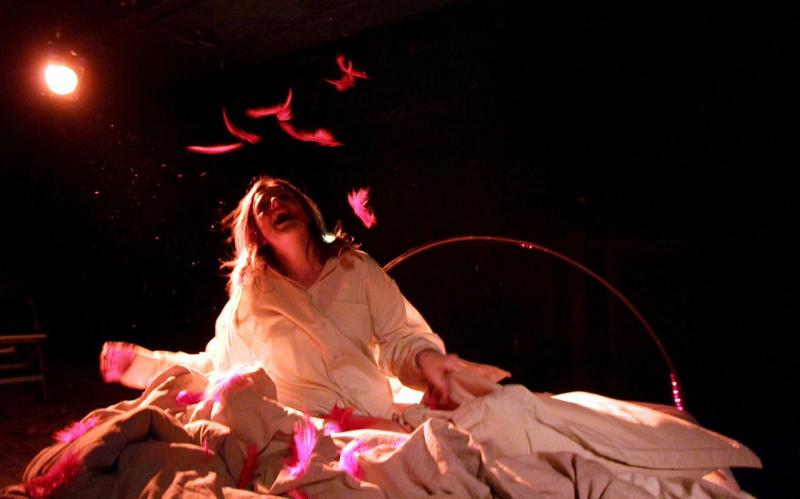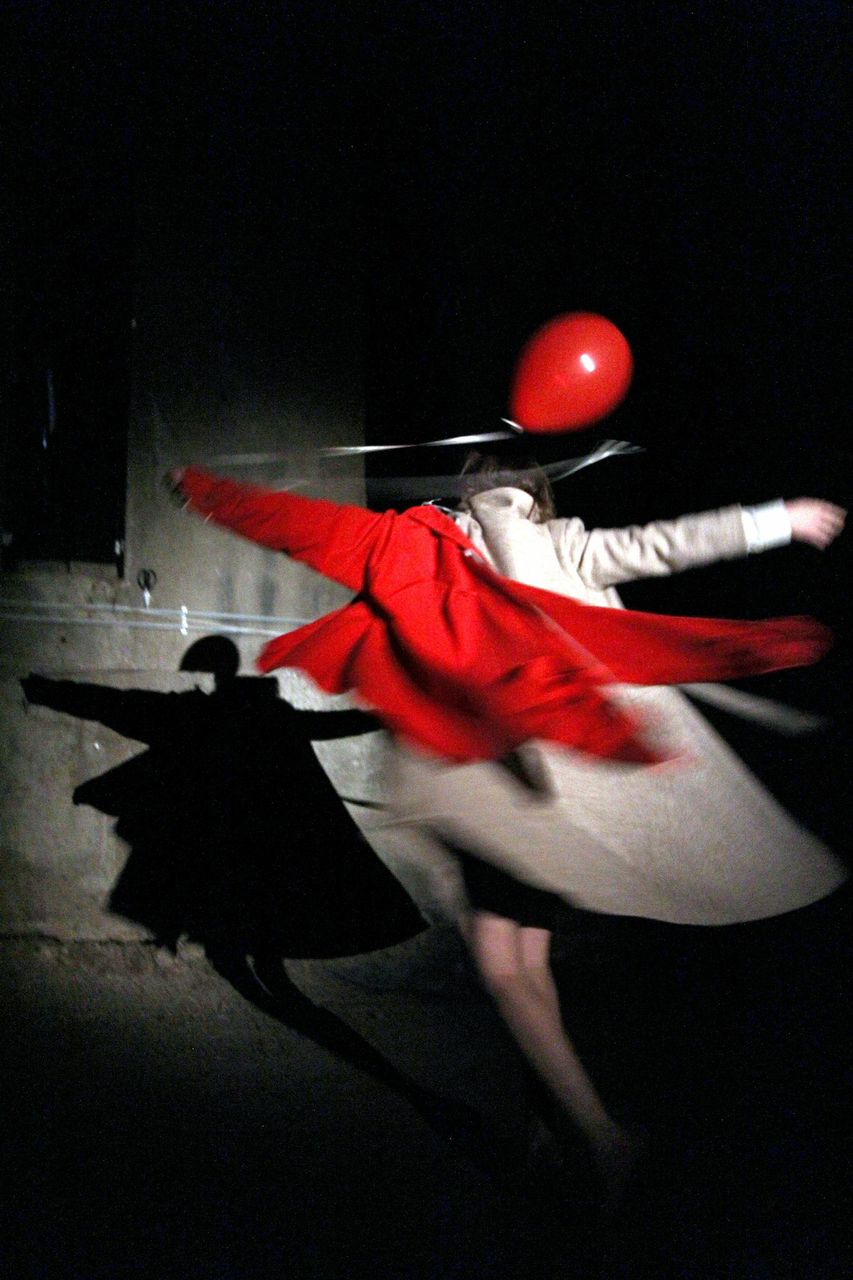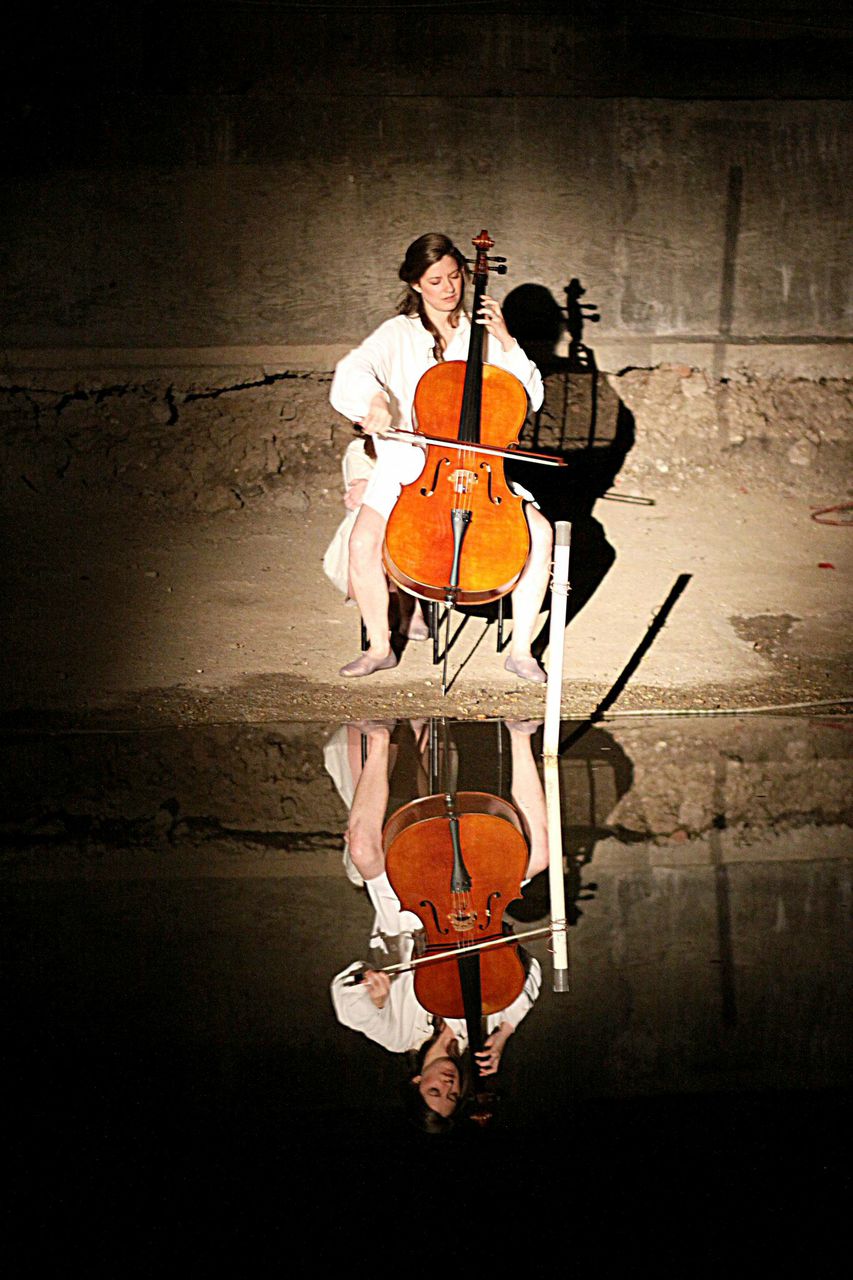Where Late the Sweet Birds Sang, The Rose Playhouse | reviews, news & interviews
Where Late the Sweet Birds Sang, The Rose Playhouse
Where Late the Sweet Birds Sang, The Rose Playhouse
A dramatic miniature that tells the many truths about love

Is the Rose Playhouse London theatre’s best-kept secret? Or simply its worst-publicised? Either way, this gem of a space, tucked away behind the Globe in Bankside, needs and deserves a greater following. If it continues to stage shows like the delicately beautiful Where Late the Sweet Birds Sang however, it’ll be an easy sell. Gentle and melancholic, inventive and profoundly moving – this is a show with a particular autumnal alchemy to it.
The first purpose-built playhouse to stage any of Shakespeare’s plays, The Rose was rediscovered by accident in 1989. Two-thirds of the foundations of the theatre have currently been exposed, but ambitious plans for the future hope to finish the job and transform this magical, liminal space into a fully-excavated site – part living museum, part theatre. Meanwhile a tiny theatre operates on the site, housed in the viewing platform looking down over the foundations. It’s extraordinary – by turns intimate and vast, a space for exploration and experiment, a rugged counterpart to the jewel-box perfection of the Wanamaker Playhouse down the road.
Exploiting the space to its fullest, Martin Parr’s Where Late the Sweet Birds pairs Shakespeare’s sonnets with music for solo cello. Two performers – actress Katherine Heath and cellist Lucia Capellaro – begin in separate worlds of music and speech, but gradually these bleed into one another as a narrative emerges and mutual commentary becomes dialogue, conflict and – eventually – reconciliation.
 We open in darkness. Silence gives way to music, as the Prelude from Bach’s G major Cello Suite sounds in the distance. What at first seems an enclosed room is revealed as a balcony. Below a search-light strafes the space, picking out a cellist playing beyond an underground lake – the water-covered foundations of the original Rose. It’s just one of a number of striking visual moments, tableaux that sit just the right side of sentimentality – though a later moment involving a lovers’ dance and some red balloons (pictured left) comes very close.
We open in darkness. Silence gives way to music, as the Prelude from Bach’s G major Cello Suite sounds in the distance. What at first seems an enclosed room is revealed as a balcony. Below a search-light strafes the space, picking out a cellist playing beyond an underground lake – the water-covered foundations of the original Rose. It’s just one of a number of striking visual moments, tableaux that sit just the right side of sentimentality – though a later moment involving a lovers’ dance and some red balloons (pictured left) comes very close.
Action shifts between this distant space and the foreground, where the two women inhabit a domestic space, moving from bed to armchair to table and back again, the huge arc of emotion chafing fruitfully against the physical confinement.
Shakespeare’s sonnets offer the dramatic scaffolding, guiding us through the stages and experiences of love, from dreaming, wanting and waiting to anger and disillusionment. These are short verses but each line is carefully weighted. Hearing rather than reading them is a challenge; these are not poems that dissolve in the ears, but stubbornly refuse to yield up all their meaning. Heath’s declamation is excellent – witty, poised and risky, taking us out of the tidy confines of the sonnet and into more uncertain territory – but even so it’s worth doing a little homework before going. The poems that convey the most are inevitably the most familiar.
Heath has a fine partner in Capellaro – a cellist who also sings (gentle, folky neo-baroque ballads – not a hey nonny in sight) and acts, offering a point of emotional stillness and constancy to Heath’s more mercurial lover. Gradually sonnet monologues become dialogues passed between the two (a device that works linguistically thanks to their shared gender), rewriting familiar verses with unexpected success.
 The influence of director Martin Parr is quietly but pervasively present throughout, at its best in the affectionate eroticism of Capellaro (pictured right), lying in bed with her cello, playing it like a lover (and who knew you could actually play a cello lying down) and exploiting the instrument’s suggestive curves. It anticipates the play’s close – a scene as moving as anything in this fragile show. Abandoned by her lover, Heath sits alone, attempting to draw music from Capellaro’s cello. Capellaro returns and together they reprise the music of the start, transforming a solo into a duet – four hands on one cello. It’s minutely choreographed, a musical metaphor that takes over where the language of Shakespeare’s verse leaves off.
The influence of director Martin Parr is quietly but pervasively present throughout, at its best in the affectionate eroticism of Capellaro (pictured right), lying in bed with her cello, playing it like a lover (and who knew you could actually play a cello lying down) and exploiting the instrument’s suggestive curves. It anticipates the play’s close – a scene as moving as anything in this fragile show. Abandoned by her lover, Heath sits alone, attempting to draw music from Capellaro’s cello. Capellaro returns and together they reprise the music of the start, transforming a solo into a duet – four hands on one cello. It’s minutely choreographed, a musical metaphor that takes over where the language of Shakespeare’s verse leaves off.
- Where Late the Sweet Birds at the Rose Playhouse until 29 November
rating
Buy
Explore topics
Share this article
The future of Arts Journalism
You can stop theartsdesk.com closing!
We urgently need financing to survive. Our fundraising drive has thus far raised £49,000 but we need to reach £100,000 or we will be forced to close. Please contribute here: https://gofund.me/c3f6033d
And if you can forward this information to anyone who might assist, we’d be grateful.

Subscribe to theartsdesk.com
Thank you for continuing to read our work on theartsdesk.com. For unlimited access to every article in its entirety, including our archive of more than 15,000 pieces, we're asking for £5 per month or £40 per year. We feel it's a very good deal, and hope you do too.
To take a subscription now simply click here.
And if you're looking for that extra gift for a friend or family member, why not treat them to a theartsdesk.com gift subscription?
more Theatre
 The Line of Beauty, Almeida Theatre review - the 80s revisited in theatrically ravishing form
Alan Hollinghurst novel is cunningly filleted, very finely acted
The Line of Beauty, Almeida Theatre review - the 80s revisited in theatrically ravishing form
Alan Hollinghurst novel is cunningly filleted, very finely acted
 Wendy & Peter Pan, Barbican Theatre review - mixed bag of panto and comic play, turned up to 11
The RSC adaptation is aimed at children, though all will thrill to its spectacle
Wendy & Peter Pan, Barbican Theatre review - mixed bag of panto and comic play, turned up to 11
The RSC adaptation is aimed at children, though all will thrill to its spectacle
 Hedda, Orange Tree Theatre review - a monument reimagined, perhaps even improved
Scandinavian masterpiece transplanted into a London reeling from the ravages of war
Hedda, Orange Tree Theatre review - a monument reimagined, perhaps even improved
Scandinavian masterpiece transplanted into a London reeling from the ravages of war
 The Assembled Parties, Hampstead review - a rarity, a well-made play delivered straight
Witty but poignant tribute to the strength of family ties as all around disintegrates
The Assembled Parties, Hampstead review - a rarity, a well-made play delivered straight
Witty but poignant tribute to the strength of family ties as all around disintegrates
 Mary Page Marlowe, Old Vic review - a starry portrait of a splintered life
Tracy Letts's Off Broadway play makes a shimmeringly powerful London debut
Mary Page Marlowe, Old Vic review - a starry portrait of a splintered life
Tracy Letts's Off Broadway play makes a shimmeringly powerful London debut
 Little Brother, Soho Theatre review - light, bright but emotionally true
This Verity Bargate Award-winning dramedy is entertaining as well as thought provoking
Little Brother, Soho Theatre review - light, bright but emotionally true
This Verity Bargate Award-winning dramedy is entertaining as well as thought provoking
 The Unbelievers, Royal Court Theatre - grimly compelling, powerfully performed
Nick Payne's new play is amongst his best
The Unbelievers, Royal Court Theatre - grimly compelling, powerfully performed
Nick Payne's new play is amongst his best
 The Maids, Donmar Warehouse review - vibrant cast lost in a spectacular-looking fever dream
Kip Williams revises Genet, with little gained in the update except eye-popping visuals
The Maids, Donmar Warehouse review - vibrant cast lost in a spectacular-looking fever dream
Kip Williams revises Genet, with little gained in the update except eye-popping visuals
 Ragdoll, Jermyn Street Theatre review - compelling and emotionally truthful
Katherine Moar returns with a Patty Hearst-inspired follow up to her debut hit 'Farm Hall'
Ragdoll, Jermyn Street Theatre review - compelling and emotionally truthful
Katherine Moar returns with a Patty Hearst-inspired follow up to her debut hit 'Farm Hall'
 Troilus and Cressida, Globe Theatre review - a 'problem play' with added problems
Raucous and carnivalesque, but also ugly and incomprehensible
Troilus and Cressida, Globe Theatre review - a 'problem play' with added problems
Raucous and carnivalesque, but also ugly and incomprehensible
 Clarkston, Trafalgar Theatre review - two lads on a road to nowhere
Netflix star, Joe Locke, is the selling point of a production that needs one
Clarkston, Trafalgar Theatre review - two lads on a road to nowhere
Netflix star, Joe Locke, is the selling point of a production that needs one
 Ghost Stories, Peacock Theatre review - spirited staging but short on scares
Impressive spectacle saves an ageing show in an unsuitable venue
Ghost Stories, Peacock Theatre review - spirited staging but short on scares
Impressive spectacle saves an ageing show in an unsuitable venue

Add comment